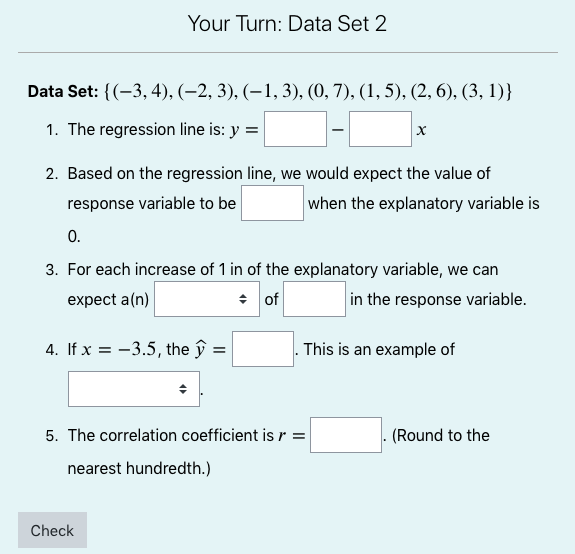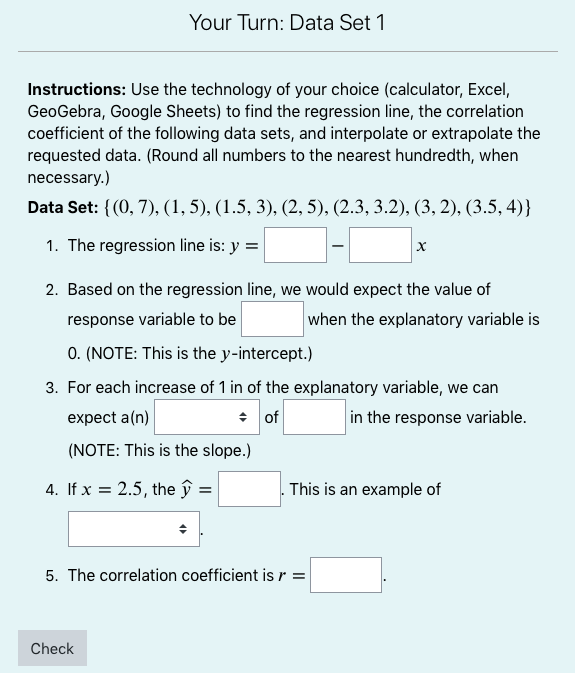
Extracted text: Your Turn: Data Set 2 Data Set: {(-3, 4), (–2, 3), (–1, 3), (0, 7), (1, 5), (2, 6), (3, 1)} 1. The regression line is: y = 2. Based on the regression line, we would expect the value of response variable to be when the explanatory variable is 0. 3. For each increase of 1 in of the explanatory variable, we can expect a(n) * of in the response variable. 4. If x = -3.5, the ŷ = This is an example of 5. The correlation coefficient isr = (Round to the nearest hundredth.) Check

Extracted text: Your Turn: Data Set 1 Instructions: Use the technology of your choice (calculator, Excel, GeoGebra, Google Sheets) to find the regression line, the correlation coefficient of the following data sets, and interpolate or extrapolate the requested data. (Round all numbers to the nearest hundredth, when necessary.) Data Set: {(0, 7), (1, 5), (1.5, 3), (2, 5), (2.3, 3.2), (3, 2), (3.5, 4)} 1. The regression line is: y = 2. Based on the regression line, we would expect the value of response variable to be when the explanatory variable is 0. (NOTE: This is the y-intercept.) 3. For each increase of 1 in of the explanatory variable, we can expect a(n) + of in the response variable. (NOTE: This is the slope.) 4. If x = 2.5, the ŷ = This is an example of 5. The correlation coefficient isr = Check